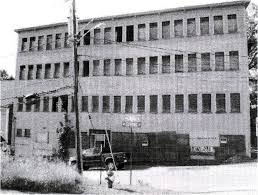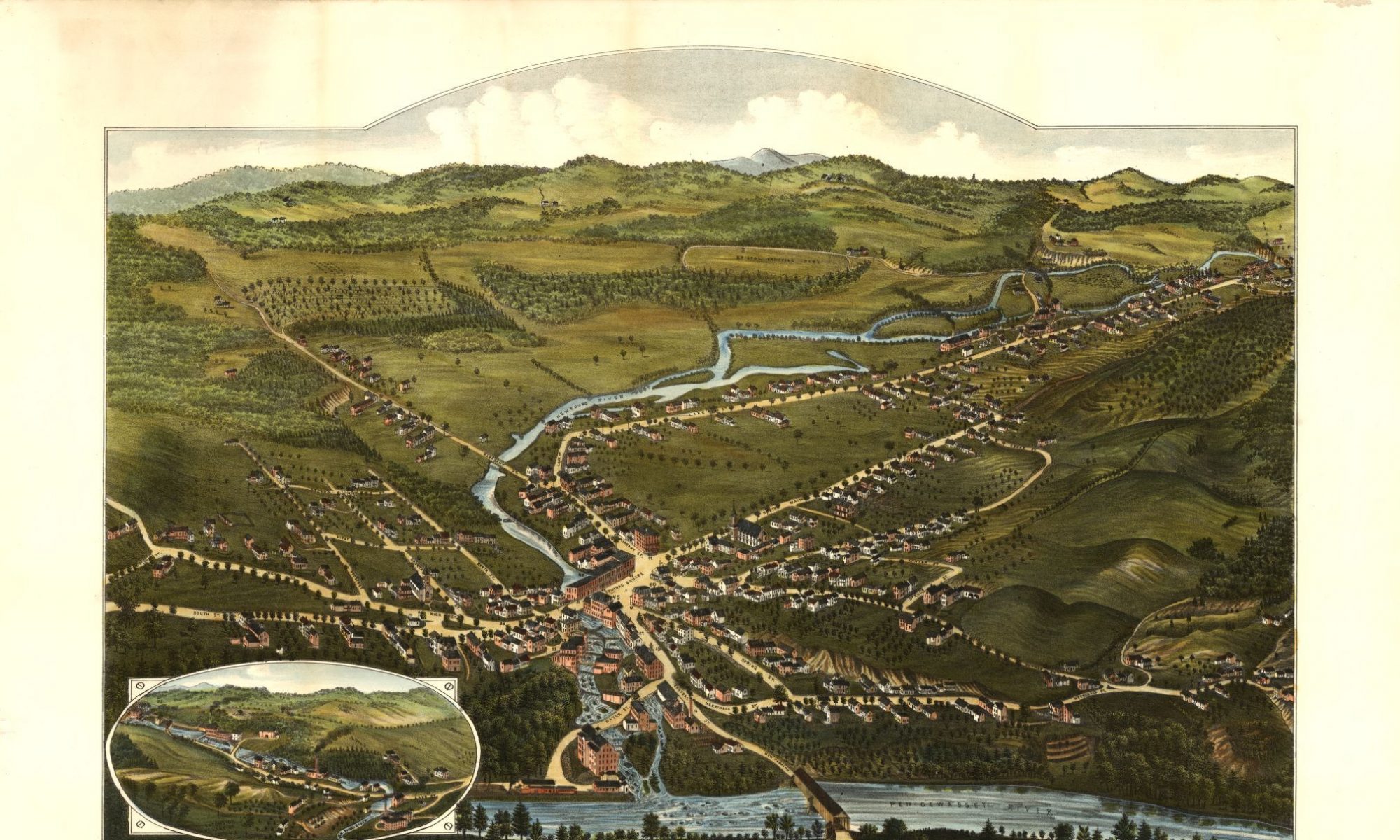
Bristol, New Hampshire is a small town, located in Grafton County. The community encompasses Newfound Lake, Profile Falls, Wellington State Park, and many unique and historic buildings listed on the National Register of Historic Places. This small town has recently found itself at a point where its residents are trying to celebrate and recognize their history. History is a topic in which not many people find a strong interest and something that not many people feel is very necessary. Some would prefer to have new and modern buildings in their town rather than maintain and keep their historic ones. But rather than changing and modernizing what remains, Bristol seeks to embrace and use its history.
Central Street and Spring Street are located in the center of Bristol, New Hampshire. Both streets are home to some of Bristol’s historic sites. Central Street, in particular, had a number of industrial complexes. One of the buildings on Central Street, which is no longer standing is the Mica Factory/ Shoe Factory, locally identified as the Mica Factory. Mica is “a group of sheet silicate mineral that includes several closely related materials having highly perfect basal cleavage… the most prominent characteristic of mica”. The word itself comes from the Latin word micare, which means “to glitter”. Mica can be found in electronics, acting as an insulator, plastics, acting as a reinforcing agent, rubber, to make molds for manufacturers, and paint film, to extend the pigment. Mica is not, however, limited to these items specifically.
 The factory was built in 1839 for the sake of expanding Bristol’s industry over the years. This factory had many owners and purposes. In 1894, when Nathaniel Bartlett & Son’s shoe factory in Massachusetts burned down, the proprietors, through family connections, relocated their business to Bristol. Bartlett & Son’s idea was to create jobs. Through many shoe sales, community involvement, and fundraising, Bartlett and Son was able to sign a 10- year lease to expand and strengthen the shoe factory at the Central Street location. Unfortunately, the lengthy renovations caused the Bartletts to sink further in debt. In August of 1896, the company found itself in financial trouble. Subsequently, on September 1st, Nathaniel Bartlett & Son assigned the business to John F. Hickman, of Hickman Bissell & Company, who held the debt, hoping that strong management would save the shoe factory. Regrettably, this was not the case, and the factory was forced to close on February 4, 1897, and all the workers were let go. Five months later, whispers went around town, and the word was out that Aiden B. Sanders, promoter and general manager of Farnsworth & Co., would buy the property and open another shoe factory. Nevertheless, this plan never came to fruition because of the lack of local workers. The company needed one hundred and twenty-five employees in order to function efficiently, and the maximum available was forty. The large empty mill was abandoned.
The factory was built in 1839 for the sake of expanding Bristol’s industry over the years. This factory had many owners and purposes. In 1894, when Nathaniel Bartlett & Son’s shoe factory in Massachusetts burned down, the proprietors, through family connections, relocated their business to Bristol. Bartlett & Son’s idea was to create jobs. Through many shoe sales, community involvement, and fundraising, Bartlett and Son was able to sign a 10- year lease to expand and strengthen the shoe factory at the Central Street location. Unfortunately, the lengthy renovations caused the Bartletts to sink further in debt. In August of 1896, the company found itself in financial trouble. Subsequently, on September 1st, Nathaniel Bartlett & Son assigned the business to John F. Hickman, of Hickman Bissell & Company, who held the debt, hoping that strong management would save the shoe factory. Regrettably, this was not the case, and the factory was forced to close on February 4, 1897, and all the workers were let go. Five months later, whispers went around town, and the word was out that Aiden B. Sanders, promoter and general manager of Farnsworth & Co., would buy the property and open another shoe factory. Nevertheless, this plan never came to fruition because of the lack of local workers. The company needed one hundred and twenty-five employees in order to function efficiently, and the maximum available was forty. The large empty mill was abandoned.
Stockholders of the Bristol Improvement Committee determined that the shoe factory could be leased for $500 a year for cutting and grinding of mica. Instead, the Bristol Electric Light Company rented space for storage, leaving much of the building vacant. Years later, on October 8, 1903, Frank E. Merrill reached out to the building owner in hopes of becoming a new tenant in the factory. This was approved by the owners in early 1904, forcing the Bristol Electric Light Company to relocate, and the White River Shoe Company moved in. The company occupied the building for only four years and was purchased by Monarch Mica Mining Company in 1910 for cutting mica. Also short-lived, the factory only operated from 1911 to 1913 before its creditors foreclosed.
The Bristol Improvement Committee again took ownership of the factory. The factory did not stay empty long, for on August 16, General Electric announced its interest in the mica business and began extensive repairs on the building. After the repairs concluded, General Electric increased production because of the abundance of mica. The company slowed down its manufacturing, and in 1963 General Electric sold the factory to Nathan H. Morrison, who resold it in 1970 to Dan Ames. Ames sold it to Alban Landry and Marie Landry after owning the factory for only two years. The Landrys used the space to make educational kits, woodworking kits, and mathematical wood kits. The couple also completed many repairs to the roof, windows, elevators, and electrical systems. They later sold the property in August of 1977, to Richard Leclercs and Patricia Leclercs. This couple used the space for auto repairs, and they improved the heating system.
It is well noted that the Leclercs kept the place in good repair, and it was in a position to be sold for a good deal of money. In August of 1984, the couple sold it to Richard Abbott, who quickly realized he only needed it for storage. At this point, the cost of upkeep outweighed the need for space. Abbott sold the property to John J. Suldenski of Sunrise Properties, who hoped to renovate the space into condominium housing spaces. Suldenski did not receive enough funding to do renovations, and the building sat neglected for so long with little or no improvements that the roof to collapsed on February 11, 2009. Fifteen months later, in May of 2010, the Bristol tax collector took the property for unpaid taxes. In 2012, it was demolished.
Jaelyn Ortiz, Plymouth State University, 2021
References:
Mica Factory, A Whole New World (Updated 2019)
Finhety, Ashley, If These Walls Could Have Talked (28 March, 2012)
Wu, Derek, and Zhuang, Li, Mica: Properties, Synthesis, and Application (2012) 2
